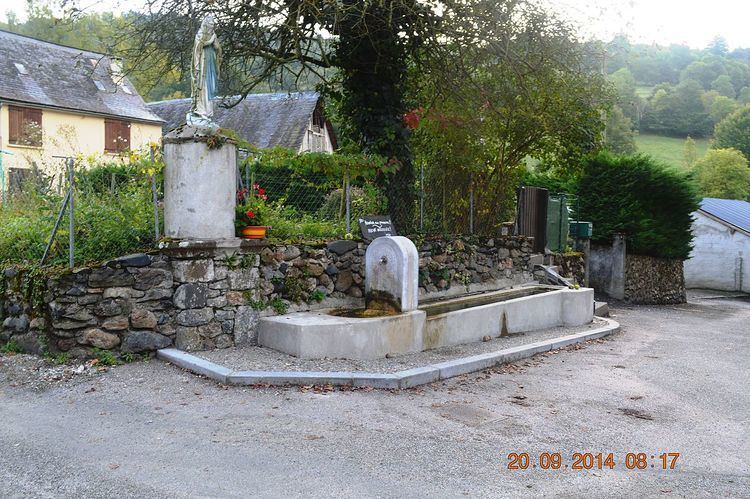Intercommunality Castillonnais Area 11.09 km² | Region Occitanie Canton Castillon-en-Couserans Population (2009) 176 Local time Tuesday 9:40 PM | |
 | ||
Weather 6°C, Wind W at 19 km/h, 63% Humidity | ||
Argein (Occitan: Argenç) is a French commune in the Ariège department in the Occitanie region of south-western France.
Contents
- Map of 09800 Argein France
- Geography
- Administration
- Demography
- Sites and Monuments
- Notable people linked to the commune
- References
Map of 09800 Argein, France
The inhabitants of the commune are known as Argenois or Argenoises
Geography
Argein is located some 12 km south-west of Saint-Girons just a kilometre west of Audressein. Access to the commune is by the D618 road from Audressein in the east passing through the centre of the commune and the village and continuing west to Aucazein. Apart from the village there is also the hamlet of Viellot. The centre of the commune is the valley of the Bouigane oriented east-west where the village lies. In the valley there is some farmland however the rugged north and south of the commune is heavily forested.
The Buouigane river flows along the central valley east to join the Léz at Audressein. Some tributaries rise in the commune to join the Bouigane including the Ruisseau d'Auriech and the Ruisseau de Sol.
Administration
List of Successive Mayors
(Not all data is known)
Demography
In 2009 the commune had 176 inhabitants. The evolution of the number of inhabitants is known from the population censuses conducted in the commune since 1793. From the 21st century, a census of communes with fewer than 10,000 inhabitants is held every five years, unlike larger towns that have a sample survey every year.
Sources : Ldh/EHESS/Cassini until 1962, INSEE database from 1968 (population without double counting and municipal population from 2006)
Sites and Monuments
The Parish Church of Saint Peter is an old Romanesque church from the 12th century and now an integral part of a church originally built in the 9th century. The original semicircular Apse forms the south aisle of the present building. There is an altar bearing a very ancient inscription (prior to the 4th century) depicted again in the south wall of the church. The Church contains many items that are registered as historical objects:
